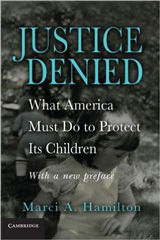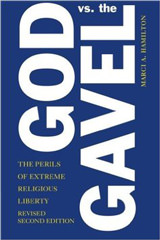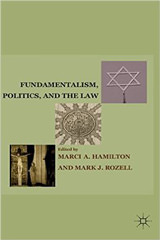Back in the day, the Constitution required a separation of power between state and federal governments. It was called “federalism,” and in one particular arena—land use—the federal government was supposed to leave cities (which, for purposes of this column, includes towns, villages, and municipalities) to shape their land use identities. So one community could decide to be heavily industrial, another could be a “bedroom community” with largely residential use, and another could choose a blend of uses. There were decisions to be made locally about open space, and aesthetics, and protecting (or not) views of the ocean, lake, or mountains. The idea was that the federal government has no business impressing a land use cookie cutter across the country.
Starting with Village of Euclid v. Ambler Realty Co. in 1926, there is a long line of cases that enforced this idea of locally crafted communities alongside national diversity and difference. To be sure, communities have not been allowed to discriminate based on race, color, religion, national origin, sex, disability, and familial status under the Fair Housing Act, but beyond discrimination, there was broad latitude to make such decisions. Uses could be separated by category, and spread out so that dissimilar uses would not have to be next-door neighbors. For example, adult entertainment could be consolidated in districts or placed on the edges; large uses with intense impacts could be distanced from residential neighborhoods; and commercial uses could be distinct from recreational uses. Many states mandated “master plans,” and updates so as to serve the larger community. Public notice, especially to those who are close to a new use, and hearings, and participation have been built into the land use process, which reflects the goal of making zoning and land use a public and shared community activity.
As recently as 2005, the Supreme Court recognized these principles (in the context of the takings case, Kelo v. City of New London:
Viewed as a whole, our jurisprudence has recognized that the needs of society have varied between different parts of the Nation, just as they have evolved over time in response to changed circumstances. Our earliest cases in particular embodied a strong theme of federalism, emphasizing the “great respect” that we owe to state legislatures and state courts in discerning local public needs. See Hairston v.Danville & Western R. Co., 208 U.S. 598, 606—607 (1908) (noting that these needs were likely to vary depending on a State’s “resources, the capacity of the soil, the relative importance of industries to the general public welfare, and the long-established methods and habits of the people”).
I won’t belabor this point now, which I have documented in this article.
The Framers’ View of Federal Power
The Framers fundamentally understood overweening centralized power. After all, they are the generation that defeated the unbeatable British monarchy and theocracy, established a fledgling constitution, which failed (the Articles of Confederation), and then drafted a federal Constitution that is heavy on distrust of anyone who holds power. The federal power is divided three ways; the federal government and the states are both sovereign; and religion may not be used as a test for public office and it may not be established.
From their wise perch, I can only imagine what they are thinking about our humongous, lurching, dysfunctional federal government. My guess is that they would recommend a hard look whenever the federal government (or any government) takes the reins. My advice is to look closely at the Department of Justice’s present campaign for religious entities against local communities.
Congress Places the Federal Government in the Local Land Use Business with RLUIPA, Displaces the First Amendment, and the Federal Government Does Just What the Framers Would Have Expected: Runs Rough-shod
In 2000, Congress decided it knows more about the appropriate federal-state balance than the Supreme Court and enacted the Religious Land Use and Institutionalized Persons Act (RLUIPA). After hearings with paltry examples of discrimination against religious landowners, but endless complaints about having to go through the pesky land use process (and a refusal to accept into the record letters from those on the “other side,” like Mayor Rudy Giuliani on behalf of New York City and Sen. Patrick Moynihan, and organizations that deal with land use routinely) the wise members of Congress enacted RLUIPA and, ignoring the Supreme Court’s longtime doctrine warning the federal government from interfering with local land use, jumped right in.
RLUIPA imposes the infamous and controversial Religious Freedom Restoration Act (RFRA) standard on local land use and state institutions. If a religious organization cannot intimidate local government into abandoning its procedures and master plan in the first place, RLUIPA gives it the power to demand that the compelling interest/least restrictive means tests be applied to local land use—regardless of whether the local government or its master plan has engaged in discrimination.
It is important to understand that RLUIPA treats neutral, generally applicable land use decisions identically with discriminatory land use decisions. But for RLUIPA, there would be a clear picture of when actual discrimination occurs, because the First Amendment’s Free Exercise Clause has been interpreted to forbid the targeting of religious organizations, at least as early as Sherbert v. Verner and most recently in Church of Lukumi Babalu Aye v. Hialeah. But RLUIPA displaces the First Amendment.
RLUIPA loads the deck against neutral, generally applicable land use laws by handing private religious entities the power to exact their attorney’s fees from the local government and by giving the Department of Justice the power to “investigate” and prosecute local governments for violating RLUIPA (regardless of evidence of discrimination). The Department has embraced RLUIPA’s power with gusto, and both threatened local governments even where there is no evidence of discrimination and imposed on master plans wholesale changes in where “assembly uses”may be located.
No longer can a city distinguish between theaters and houses of worship, despite their differing impacts and tax revenue for the people. If a plan includes any use that involves an “assembly” of people, the Department pressures the city to change its land use law permanently to create more opportunities for religious uses (and religious uses is not limited to houses of worship but extends to schools and homeless shelters, among others).
Thus, we are in the era when the federal government is exercising its power to unilaterally rearrange the cities’ land use plans. The Department of Justice recently released a “report” on RLUIPA and a broader “report” on what it posits is a nationwide, endemic problem of “religious discrimination,” which included land use.
I can only imagine the Framers chuckling, most of all James Madison, because RLUIPA has enticed the federal government to exhibit the very faults of centralized and unchecked power that the framing generation experienced and cautioned against. Now that the Department is so comfortable strong-arming local governments—even with impressive records on relations between religion and elected officials—for religious land uses, one can only imagine what will be the next land use category it needs to take over from the cities and state.
Lack of Transparency. The 2016 report states that the Department’s experience “has reinforced the conclusion that minority groups have faced a disproportionate level of discrimination in zoning matters.” And just how does the Department prove that? By saying it brought a “disproportionate number of suits and investigations involving minority groups.” But—“disproportionate” to what? And how did it decide which cases to bring out of the universe of possibilities?
The report contains no comprehensive list of RLUIPA disputes nationally so that the average citizen could determine whether there really is “disproportionate” treatment of so-called “minority” religions. Nor does the Department define a “minority” religion in a country where no religious group constitutes close to 50 percent of the citizenry. Offensively, to make its misleading minority point, the Department trivializes the differences between Christians by lumping them all into one category, to make it appear there is a “majority” religion. Though it does then divide Christians into white and black Christians, which is bizarre.
The report throws around statistics like nobody’s business: as one indicator of a growth in supposed Islam-based discrimination, it states that the number of investigations regarding mosques or Islamic schools has risen “dramatically” from 15 percent in 2010 to 38 percent in 2016. Whoa! The number of mosques in the United has grown at a faster rate than that since 9/11. When religious building increases, potential RLUIPA suits increase because it is such a convenient, and potentially money-saving tool to circumvent local land use priorities and procedures. Look at the Norwalk case where the mosque owned a completely inappropriate piece of property for a large, intense use and walked away with a million dollars. What rational land use developer wouldn’t love to be able to argue that the land use code can’t be applied to it? (Indeed, does Donald Trump know about RLUIPA?) Not to mention the taxpayers underwrite the attorney’s fees of the developer. It’s a deal! These numbers may be more a story of the success of Muslims in building congregations than in discrimination. That is because of the next point:
The Department Conflates Discrimination with RLUIPA Violations. The report treats all religious land use cases as equal and does not break down which cases involved unconstitutional discrimination against religious landowners and which involved a violation of RLUIPA, even though they are decidedly different. That would be a valuable statistic to have: we could have an intelligent and informed conversation about the reality of discrimination and not the name-calling that RLUIPA encourages. But RLUIPA sidelines the First Amendment and muddles the difference between discrimination and the application of ordinary land use law.
Instead of being accurate about discrimination, the report elides the difference, as it quotes from the most extreme pro-religion interpretation of RLUIPA’s land use provisions, in an opinion issued in 2005: RLUIPA “backstops the explicit prohibition of religious discrimination.” True, but it does not thereby transform every denial into an act of discrimination.
The report also includes a cherry-picked list of cases, which are characterized as “examples.” There are no criteria provided for why these cases are so-called examples. Nor does the report acknowledge the all-too-frequent opportunism of religious landowners armed with RLUIPA. If they find a low-cost property or one is given to them, they charge into federal court, waving RLUIPA to get around the property’s zoning, the land use process, and the neighbors. Nor does it mention the number of times that RLUIPA cases have been settled by local governments for millions in taxpayer dollars where the local government likely would have won,, but the cost of a trial is just too prohibitive. It literally pays for a religious landowner to go to federal court and hold a local government hostage until it coughs up enough money for it to build its dream religious building. But that is nowhere in the Department’s supposed “report.”
Selective, Discriminatory Input. The broader report paints the United States as a bubbling cauldron of discrimination against religion. (There is a tiny concession that just perhaps religious folks are discriminatory toward others, say, LGBTQ individuals, but that is quickly swept aside and doesn’t appear again.) And they should know because they did a real study where they instituted “roundtables” in six cities over four months in 2016. I was prepared to give some kudos to the Department for at least investigating whether there is widespread discrimination, but that would be hard to do given the stacked roundtables it constructed.
The roundtables were overwhelmingly composed of representatives from religious organizations: when all five events are taken together, they included over 77 percent religious organizations or law firms that have developed RLUIPA law practices for religious groups. There is not a current or former city council member, mayor, governor, or attorney general among them, let alone any of the organizations that represent elected officials. Nor a municipal attorney. Nor is there a single humanist, atheist, or agnostic group (even though 23 percent of the American population is religiously unaffiliated). Nor did these “fact-gathering” roundtables include the National League of Cities or the International Municipal Lawyers Association, a land use planner or, God forbid, the American Planning Association. No homeowners or neighborhoods who were called “bigots” for objecting to a large-impact religious project next to their homes was asked to participate. No elected official or accountant for a city was asked to explain how the city paid the $2,000,000 “settlement” to make a meritless RLUIPA claim go away. That could have been enlightening for all gathered, and could have given this broader report some credibility.
On a lighter note, the Department “hope[s] to continue to encourage meaningful dialogue among diverse communities, religious groups, and the Federal government.” It’s never too late to start. They would have to first establish conversations between all stakeholders in the land use process, not to mention experts on, well, land use. These roundtables are repetitions of the slanted legislative history concocted for RLUIPA, which I discuss here. That jerry-rigged legislative history is how the Department became the unaccountable czar of local land use in the first place.
Complete and Utter Lack of Respect for Local Priorities, Law, Process, or Taxpayers. The report’s mention of RLUIPA as the “backstop” for discrimination is an admission that the Department is treating all actions by local governments that do not result in a favorable result for a religious entity as “discriminatory.” In short, for the feds, it’s all the same, thank you very much. Cities, neighbors, elected officials, and citizens often find that presumption of discrimination insulting, but, hey, this is the federal government telling you it knows what is best. There is a hilarious section in the broader report on “discrimination” where it is suggested that after an RLUIPA dispute there are often hard feelings (Americans don’t love being called bigots when what they actually really care about is the recurring traffic blocking their driveways or the uptick in crime in their neighborhood from a homeless shelter) and the Department should facilitate community unity. So let me get this straight: after the federal government unnecessarily tears apart a community, it will stitch it all back together? Free advice to local communities: run for the hills.
The report doesn’t even give lip service to the constitutional obligation of the federal government to respect cities’ land use planning principles and goals, citizens, or concede that the citizens and local officials it tars with discriminatory motives in the land use process deserve better from their government.
But perhaps the most glaring omission from these reports is any awareness that the United States Constitution requires the separation of church and state–and the Department is the “state” part of that equation. James Madison and his fellow Framers would be saying “I told you so” right about now.









